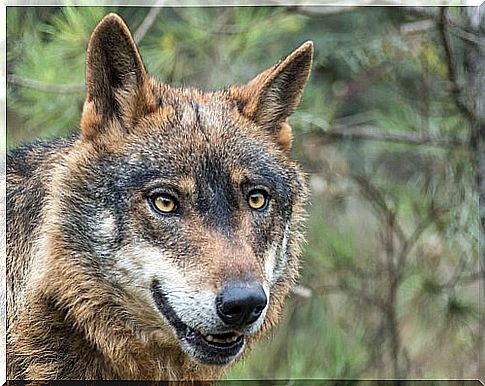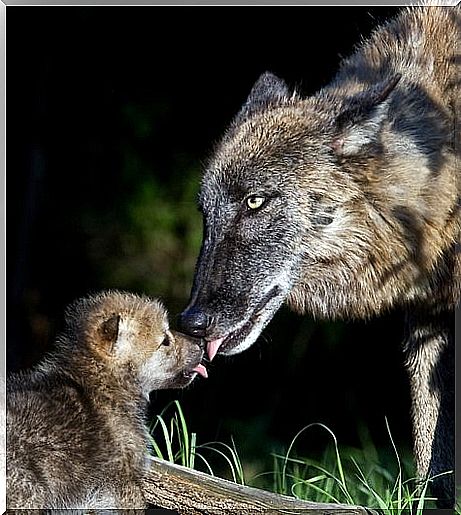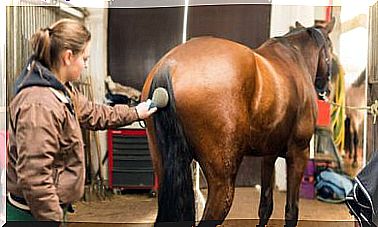The Iberian Wolf Is Critically Endangered

The Iberian wolf is actually protected by the Fauna-Flora-Habitat Directive (FFH) of the European Union. But within Spain the nature conservation initiatives are not uniform. However, the Iberian wolf is vital to the sustainability of ecosystems and biodiversity.
The Iberian wolf: natural habitat and relationship with humans
The Canis lupus signatus ( the Iberian wolf in Latin) has long been a predator on the Iberian Peninsula. Especially in the northwest quadrant of the peninsula. It feeds on large herbivorous prey and is critical to maintaining the ecosystem. It is said that he is the ancestor of dogs.
The natural habitat of this species are regions with low population density. In addition, they are found in places with a wide variety of prey, such as deer, roe deer, and wild boar. Due to the wolf’s ability to adapt to its environment, the basis of its diet changes depending on the habitat. Chickens, cattle and rabbits supplement their diet in regions where others are scarce.
This is a problem for the rural areas, whose economies are based on ranching. The most important factors at this point are human tolerance in coexistence with this species and the development of protective and preventive mechanisms that improve coexistence.
The Iberian wolf is critically endangered
According to the latest wolf population count, Spain is the natural habitat of more than 30% of the wolves in Europe. The species has therefore been declared of Community Interest by the European Union. So far there are no uniform regulations for the protection of these animals in Spain.

In addition , poaching and, in many cases, poisoning increase the risk for the Iberian wolf and slowly make it extinct.
Some facts to clarify
According to estimates of the last census of the Iberian wolf between 2012 and 2014, the population has increased from 250 to 297 packs since 2005. However, experts in the field and environmentalists say the data is not real. They feel that important aspects such as the number of wolves per pack have not been taken into account.
In addition , the official regional censuses did not apply a uniform methodology or uniform criteria in this area. Because of this, it is difficult to determine the true population of wolves in Spain.
It is estimated that an average of 800 specimens are killed each year, mainly due to poaching. The Iberian wolf has already disappeared in the central area of the Iberian Peninsula. In 2015 it was recognized as endangered by environmental groups in Andalusia. There the population is between 4 and 56 specimens.
The Iberian Wolf: Importance for the Ecosystem
Currently, the densest population of the Iberian wolf is in the municipality of Muelas de los Caballeros in Zamora. There is still 50% in the north of Castilla y León and less than 35% in Galicia. Some populations also survive in the Sierra Morena (Jaén and Cuenca).
Conservation initiatives
The Ministry of Agriculture has asked the European Union to consider the Iberian wolf as an endangered species throughout the area.
Various civil demonstrations from the public and private sectors are calling for state intervention to ensure species protection throughout Spain. They also call for dialogues to be created between the various sectors that are involved in one way or another or that feel disadvantaged.
Some of the initiatives in Spain on this issue are:
- The presentation of concrete proposals for political formations to defend the Iberian wolf. They are developed by ASCEL (a Spanish Association for the Protection of Iberian Wolves), Ecologistas en Acción, Lobo Marley and WWF.
- Approval of a draft law by the Agriculture, Food and Environment Commission. These regulations serve to preserve this animal and to mark it as a protected species in the entire area.
There is an initiative of the Spanish community canvassing “Unidos Podemos”. She urges the government to include the species on the special protection list north of the Douro. In addition, it demands that the population south of the Douro be included in the Spanish catalog of endangered species and declared as critically endangered.









